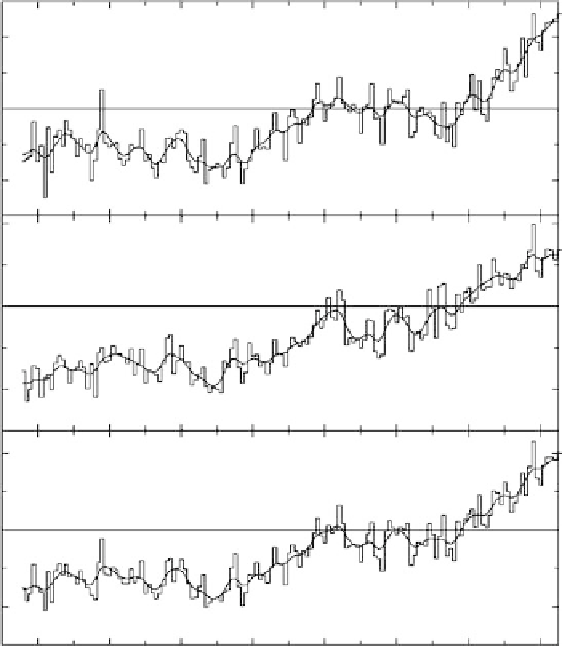Biology Reference
In-Depth Information
Example 1-1
.......................
Global Temperature Analysis. It has been estimated that the average
surface temperature of the Earth has risen 0.8 to 1.0
F in the last century.
This increase with time (presented in Figure 1-16 as deviations from
long-term averages) is fueling a heated debate over what may be causing
the accelerated global warming of the past 2 decades.
The many factors that impact the Earth's temperature can be broadly
grouped as external and Earth factors. External factors include solar
output, earth-sun geometry, and stellar dust, to name a few. Earth
factors include volcanic activity,
2
ocean heat exchange, and the
1860
1880
1900
1920
1940
1960
1980
2000
Northern Hemisphere
0.5
C
0.0
−
0.5
0.5
Southern Hemisphere
0.0
−
0.5
0.5
Global
0.0
−
0.5
1860
1880
1900
1920
1940
1960
1980
2000
FIGURE 1-16.
Deviations of global temperature from long-term averages. Values for the northern and southern
hemispheres are also shown. (Source:
http://www.cru.uea.ac.uk/cru/data/temperature/.
Used by
permission of the Climatic Research Unit, University of East Anglia, Norwich, UK.)
2. Volcanic activity can significantly impact temperature when volcanic dust
lifted high in the atmosphere blocks solar radiation. For example, climatologists
blame increased volcanic activity during the period 1812-1817, especially the
volcanic eruption of Mount Tambora in Indonesia in 1815, for the ''year with no
summer'' in New England in 1816 (Lamb [1995]).










